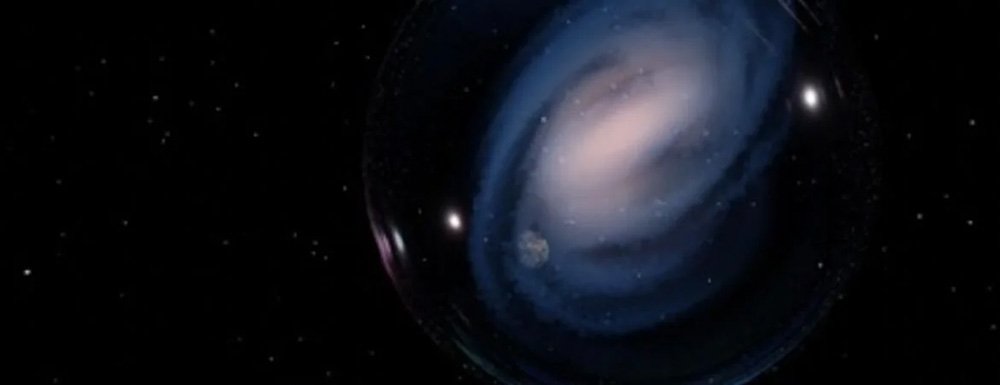Spiral galaxies like the Milky Way are like cosmic snowflakes: no two are exactly alike. For many years, astronomers thought that spirals could not exist until the universe was about half its current age. Now, a newly discovered galaxy in the early universe is challenging that idea.
CEERS-2112 is an early “space snowflake” with spiral arms and a bar across the middle. What’s amazing is that this structure was discovered when the universe was only 2 billion years old. That’s about 5 billion years earlier than astronomers expected such a thing to exist. The fact that perfectly formed spirals existed so early suggests that our ideas about galaxy formation in the early history of the universe require some readjustment.
Investigation of the early universe
The galaxy was revealed during a survey called “Cosmic Evolution Early Emission Science” (CEERS) conducted by JWST. JWST uses imaging and spectroscopy to explore the early universe and find the earliest galaxies. The analysis of the CEERS-2112 galaxy was carried out by an international team led by astronomer Luca Constantin from Spain’s Astronomical Center.
The CEERS results should show astronomers an early population of galaxies at high redshifts (distances). It is also useful for estimating related star formation conditions and black hole growth. Finally, this study should provide insight into the formation of galactic disks and bulges. Essentially, the CEERS data adds to the body of knowledge about first light and reionization (which happened after the Big Bang) and should explain the formation and evolution of early galaxies.
Early deep-field images of very distant galaxies show galactic debris and irregular clusters of stars in the early Universe. That was evident in some of the first Hubble deep-field images. The farthest objects in the image appeared more blurry and indistinct. And some of them appear to be colliding, which fits into the collision model of galaxy formation.
Formation of galaxies in the early universe
Before the days of Hubble and JWST, astronomers actually felt that spiral galaxies take a long time to form. They often describe hierarchical models of galaxy formation. There, clusters of smaller galaxies collide to form larger galaxies. Over time, these objects begin to develop spiral arms and rod-like structures.
Astronomer and team member Alexander de la Vega said: “In such galaxies, bars could form spontaneously due to instability in the spiral structure or gravitational influence from neighboring galaxies. “There is a certain sex.” He is currently a postdoctoral fellow at the University of California, Riverside. “In the past, when the universe was very young, galaxies were unstable and chaotic. It was thought that galaxies in the early universe did not form bars and could not survive for long.”
The spiral arms are likely the result of density waves moving through the galaxy. Bars are also formed from density waves that radiate out from the center. This compresses the material in the arms and bars, causing an explosion of star formation. That may explain why these regions of the galaxy appear brighter because they are filled with hot, young stars. Achieving all of this will take time. This is why astronomers have suggested that it would take about half the age of the universe for spiral galaxies to form.
CEERS-2112 is part of the early universe
According to de la Vega, CEERS-2112 changes the conversation about spiral formation. “The discovery of CEERS-2112 shows that galaxies in the early universe may have been as ordered as the Milky Way,” he said. “This is surprising because galaxies were much more chaotic in the early universe, and few had structures similar to the Milky Way.”

Of course, the presence of CEERS-2112 in the early Universe changes theoretical models of early galaxy formation. First, it doesn’t seem like it was all just a jumble of weird little galaxy shapes. If CEERS-2112 is any indication, some were quite stable in the early stages of its existence. They can host the central rod and the beginning of the spiral arms.
Moreover, this early “ordered formation” hints at dark matter and the role it played in the immediate aftermath of the Big Bang. “Dark matter is thought to influence the rate of bar formation, so these models may need to adjust the amount of dark matter that makes up galaxies in the early universe,” de la Vega said. .

The discovery of CEERS-2112 shows that even in these small, distant, and dim galaxies, bars and spirals can be detected at very early times. JWST observations also give astronomers the opportunity to make solid estimates about the shape and mass of the galaxy’s central bar.
reconsider theory
The discovery of CEERS-2112 will force us to reconsider the conditions of the early Universe. Astronomers once thought that going from star cluster to bar spiral was a process that would take billions of years, but now they think it could happen much faster. “The discovery of CEERS-2112 shows that this could happen within about a billion years, or even less,” de la Vega said.
The rapid production of such spiral arms and bars means that the Universe (and its dark matter component) ordered its structure fairly quickly through processes of star formation and galaxy collisions.
For more information
A galaxy similar to the Milky Way discovered in the early universe
Milky Way-like bar spiral at redshift 3
Overview of CEERS

